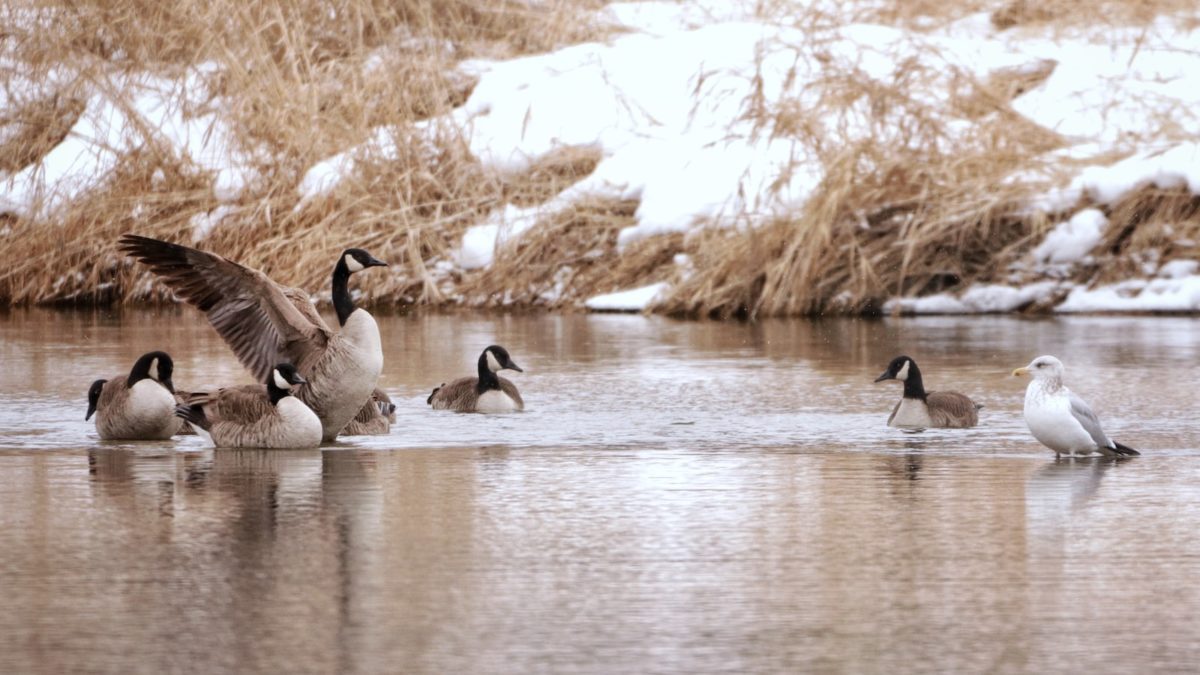Wildlife
DWR: Avian Flu confirmed in 3 additional Utah counties as hunting seasons begin

Photo: Dallas Penner
SALT LAKE CITY — The first cases of avian flu in Utah were confirmed in April in birds and later in two foxes in June. On Thursday, the Utah Division of Wildlife Resources (DWR) confirmed in a press release that Avian Flu has spread to three more counties in Utah, the day after hunting season for various wildfowl began.
DWR confirmed that in addition to six counties with previously confirmed cases of avian flu (Cache, Weber, Salt Lake, Utah, Tooele and Carbon counties), avian flu has been found in Davis, Sanpete, and Millard counties, bringing the total count of counties with confirmed cases to nine. So far, no cases have been confirmed in Wasatch or Summit Counties. While avian flu is considered a low risk to humans, DWR still recommends caution to those at higher risk of exposure.
The new confirmed cases coincide with the first days of several wildfowl hunting seasons in Utah, including the American crow, band-tailed pigeon, and dusky and ruffed goose seasons. September also marks the beginning of the sandhill crane, chukar, gray partridge, and other fowl hunting seasons.
In a brief statement in the press release, DWR Veterinarian Ginger Stout commented that “if anyone finds a group of five or more dead waterfowl or shorebirds — or any individual dead scavengers or raptors — they should report it to the nearest DWR office and absolutely make sure not to touch the birds or pick them up.” Stout continued by saying, “Report it to us, and we will come collect them for testing. We are continuing to monitor this virus in wild bird populations. This particular strain is affecting more wild birds than the previous outbreak of highly pathogenic avian influenza.”
According to the press release, the virus can spread to poultry and domestic birds through shoes, vehicles, and other equipment contaminated by infected nasal and oral discharge and fecal droppings. Fortunately for Utahn birdwatchers, the press release comments that “songbirds are not typically affected by avian flu, so people shouldn’t have to remove their bird feeders unless they also have backyard chickens or domestic ducks, which are susceptible to the virus.” DWR does recommend that people regularly clean bird feeders and baths.
DWR included a list of best-practices to keep hunters safe this fall as follows:
Do not harvest, handle or eat any animal that appears sick.
Field dress game animals in a well-ventilated area or outdoors.
Avoid direct contact with the intestines.
Wear rubber or disposable latex gloves while handling and cleaning birds. Wash your hands with soap and water, and thoroughly clean all knives, equipment and surfaces that come in contact with the birds. Disinfect using a 10% chlorine bleach solution.
Keep your game birds cool, clean and dry.
Do not eat, drink or smoke while cleaning game or handling animals.
All game meat should be thoroughly cooked before eating (well-done or 165° F).
Dogs are susceptible to HPAI, but don’t often show clinical signs. Though the risk of infection is low, visit the DWR website to identify the locations with active cases of avian flu in wild birds and avoid those areas when using retrievers. Consult your local veterinarian if your dog exhibits any respiratory symptoms.
If you have domestic poultry, keep them separated from the wild bird carcasses you have harvested, and do not handle poultry after handling wild birds.
Again, while no cases have been confirmed in Wasatch or Summit counties, DWR still recommends caution to all hunters in Utah to help mitigate the spread of avian flu this fall.


















